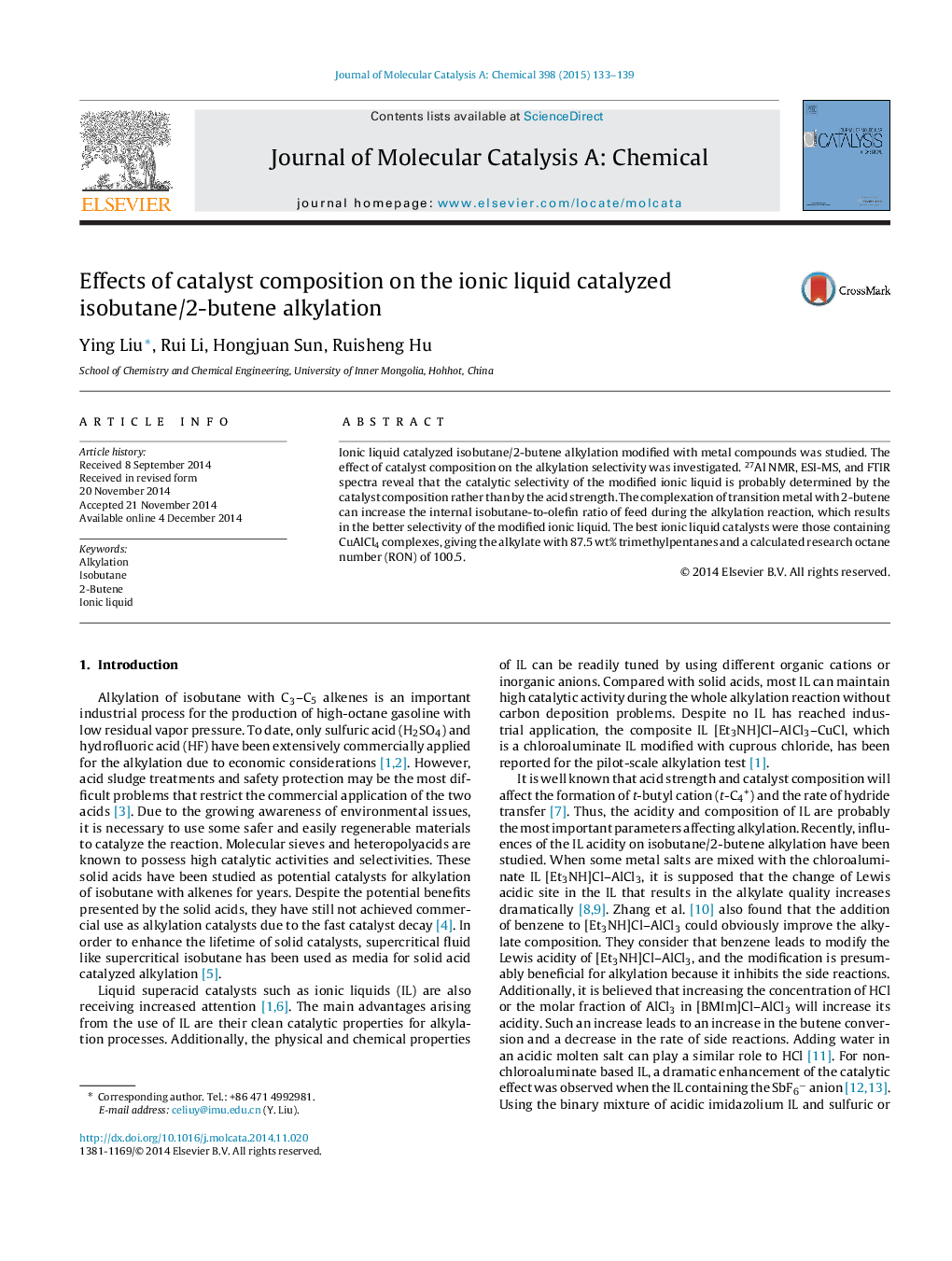| Article ID | Journal | Published Year | Pages | File Type |
|---|---|---|---|---|
| 65207 | Journal of Molecular Catalysis A: Chemical | 2015 | 7 Pages |
•Ionic liquids modified with metal compounds show superior alkylation selectivity.•The composition and acid strength of ionic liquids were studied upon NMR and FTIR.•The alkylation selectivity of the ionic liquidis mainly determined by its composition.•Increasing isobutane-to-olefin ratio of feed will increase alkylate quality.•The complexation of transition metal ions with 2-butene will improve the I/Oratio.
Ionic liquid catalyzed isobutane/2-butene alkylation modified with metal compounds was studied. The effect of catalyst composition on the alkylation selectivity was investigated. 27Al NMR, ESI-MS, and FTIR spectra reveal that the catalytic selectivity of the modified ionic liquid is probably determined by the catalyst composition rather than by the acid strength. The complexation of transition metal with 2-butene can increase the internal isobutane-to-olefin ratio of feed during the alkylation reaction, which results in the better selectivity of the modified ionic liquid. The best ionic liquid catalysts were those containing CuAlCl4 complexes, giving the alkylate with 87.5 wt% trimethylpentanes and a calculated research octane number (RON) of 100.5.
Graphical abstractIonic liquid catalyzed isobutane/2-butene alkylation modified with metal compounds was studied. The catalytic selectivity of the modified IL is determined by the catalyst composition. The complexation of CuAlCl4 with 2-butene can increase the internal isobutane-to-olefin ratio during the alkylation reaction, which results in the better selectivity of the modified IL. When ionic liquids containing transition metal complexes, high quality alkylates could be obtained.Figure optionsDownload full-size imageDownload high-quality image (347 K)Download as PowerPoint slide
